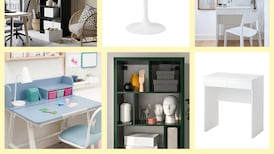The past 12 months have seen an enormous shift in our attitudes towards our outdoor and garden spaces. These are the places where, when restrictions allowed, we could connect with friends and family. They are the spaces where we can escape the confines of our homes. They provide us with an all-important connection to nature, helping us to unwind and de-stress.
Our requirements have changed for our outdoor spaces and what we expect from them. These are the four key areas to look at when considering an outdoor redesign.
Connectivity
Many people now see their gardens as additional rooms, as a space to live in rather than just somewhere to go when the weather is fine. From building garden rooms to outdoor kitchens, home cinemas, and seating areas, we are choosing to use and appreciate our fresh air spaces in a whole new way.
For years it was a challenge getting clients to allocate a portion of their renovation budget to the outdoor space. But you will get so much more from a refurbishment when you think about the two areas together.
The key is creating as unified a space as possible. Blur the lines by continuing floor finishes, wall treatments and roof structures between the two areas so you can’t easily define where one space ends and the other begins. Running the same or a similar floor tile from inside to outside is a great way to achieve this kind of flow. Make sure the level from inside to outside is the same to create a seamless connection.
When you extend your living space outside, you gain additional accommodation.Carrying the internal finishes out creates the illusion of yourinternal and external spaces feeling larger.
Flexibility
Our gardens have become multifunctional since the pandemic began. They are now where we work, exercise, dine, cook and hang out. This influences decisions when it comes to design. There is a move away from fixed and built-in features and a greater focus on creating spaces that can adapt and change depending on how we want to use them.
“It’s a lovely idea to be more fluid with the design of a garden,” says garden designer Leonie Cornelius. “That’s part of their nature; to be more flexible.”As kids grow, for example, they will use it differently. It should accommodate those changing needs over time.
Hands-on approach
As has happened with interiors, people have become more confident about tackling small projects themselves. I’ve seen people who never had any interest in gardens getting involved in small outdoor projects and even enjoying the process. “People need to trust what they like and what they are drawn to when choosing plants,” says Cornelius. “Garden design should be about feeling good and connecting with wildlife.”
It is also about trial and error. Every garden is unique. The orientation, soil composition etc will all have an impact on which plants will thrive and which will fail. What works in a neighbour’s garden might not work in yours, and that’s part of the fun.
Privacy
Now that we are all spending more time in our gardens, privacy has become more of a concern. The best way to deal with overlooked gardens is to spend time figuring out where you like to sit and other areas where you would like greatest privacy. Then look for ways to add planting to create screening.
Planting for privacy doesn’t have to be confined to the perimeter of your garden. “Don’t feel you have to clear the central lawn area and plant all around it,” says Cornelius. “It can be lovely to bring things into the garden a little and create breaks so the garden becomes a journey of discovery.
“Rather than being able to see everything in the garden all at once, a centrally planted feature cluster of shrubs or trees can work well and develop a point of interest in the garden.”
She suggests choosing native trees and shrubs when planting for screening. “We should be planting native specimens to encourage biodiversity. Crab apples, birch, hawthorn and blackthorn are all lovely native trees.”
Another effective way to gain privacy from neighbouring gardens is to create covered seating or dining areas with a pergola type structure or awning. When planning a covered area, you should also think about the weather conditions. If you plan on having a roof covering, make sure it’s generous enough to keep the rain out properly. Glass or polycarbonate are good choices as they won’t create too much shade or block light.
Denise O’Connor is an architect and design consultant. @optimisedesign












